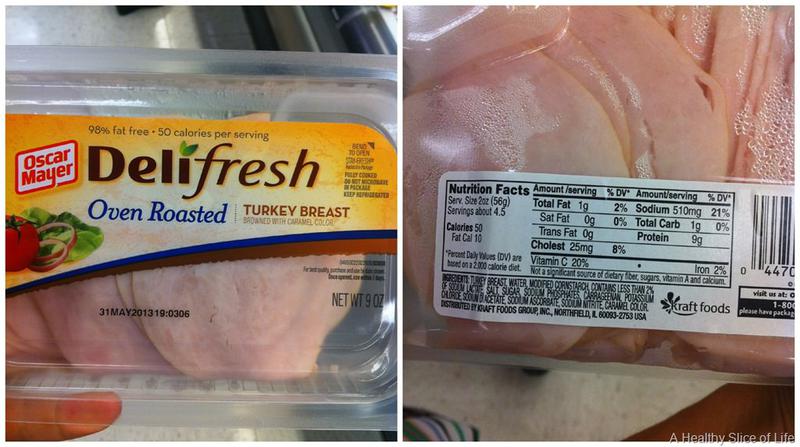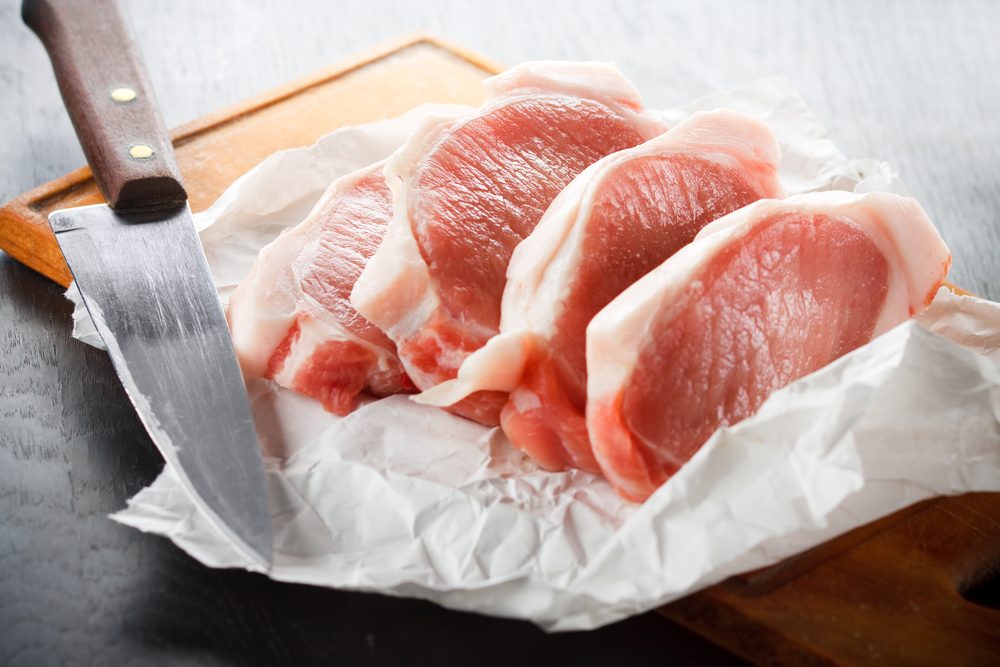It's a fact: 49 percent of Americans consume at least one sandwich each and every day, according to the USDA's National Health and Nutrition Examination Survey (NHANES). And more than half of those sandwiches are assembled with pre-packaged deli meat, says a Nielsen report. But do you know what's actually in these cold cuts?
- Oscar Mayer Turkey Lunch Meat
- What 2 Ounces Of Turkey Lunch Meat Looks Like Bacon
- Turkey Lunch Meat Calories
While these sandwich stackers might seem 'healthy,' their ingredient lists reveal that they have much more than meets the eye. Take Hillshire Farm's Thin Sliced Oven Roasted Turkey Breast, for example. Sounds like a good choice, right? But a close look at the ingredients reveals that it has: Turkey Breast, Turkey Broth, Modified Corn Starch, Vinegar, Contains 2% Or Less: Salt, Sodium Phosphate, Natural Flavorings (Including Celery Juice Powder), Carrageenan, Sea Salt.
Keep reading for a pro translation of what these beyond-turkey additions really mean—and what they mean for your body, as what's really in your cold cuts isn't necessarily the best for your overall health.
The Main Culprit of Deli Meat: Sodium

'When I think of deli meats and processed meats, the one thing most think of is salt,' says Jenna A. Werner, RD, creator of Happy Slim Healthy 'If you do choose to include deli meats in your menu, choose the right ones.'
Oscar Mayer Turkey Lunch Meat

The right ones might not be so clear, though, according to Erin Thole Summers, RD, a sports nutrition consultant in West Des Moines, Iowa. Yes, this is even true if you're opting for a seemingly all-natural option like grocery store roasted chicken. 'Rotisserie chicken may sound like a healthier option than deli meat since you're purchasing the entire chicken, but it still contains a high amount of sodium. Three ounces of rotisserie chicken can have close to 300 milligrams of sodium, which is comparable to deli meat,' Summers says. The American Heart Association recommends you consume no more than 2,300 milligrams of sodium every day.
Your best bet is to stick to fresh, home-roasted chicken, but you can still avoid the worst of all deli meats by following this handy guide: 'Seek out meat with less than 20 percent of your recommended daily value (345 milligrams or less) of sodium. Look for 'reduced sodium' or 'low sodium' on the label, and keep an eye out for varieties that are flavored with herbs and spices,' Thole says. 'Remember that turkey, chicken, and roast beef are always going to be better choices than ham, bologna, or salami, since the latter trio is higher in fat and more processed,' she adds.
Mar 30, 2011 i just made a cold cut sandwich, got the meat from the deli so it doesnt have nutrition info on it, so i look it up in the database and i found it or something close to eat but a serv. Size is 2 ounces. What does that equal in slice terms? I had 2 slices of ham and 2 slices of turkey. Buddig Original Turkey Pack, 2 Oz. Average Rating: (4.2) stars out of 5 stars 25 ratings, based on 25 reviews. Coupons and recipes from the Buddig. Overall, roast beef, turkey, and chicken beat out other deli meats when comparing the fat, salt, and calories. They are the healthiest options for you to pick from at the deli. According to the World Health Organization, a n 18 percent increase in colon cancer has been found when 50-gram portions of processed meat are eaten daily. Mar 30, 2011 I bought some Boars Head turkey breast from the deli today. I have a food scale, but if I didn't this is how I would have figured it out: The label they slapped on the deli bag said I have.26 pounds of turkey breast. One pound is 16 ounces, so.26 X 16 gives me 4.16 ounces of turkey breast. There are 28.36 grams in an ounce (rounded), so.
RELATED: The science-backed way to curb your sweet tooth in 14 days.
Additive #1: Turkey Broth
'This helps some with the natural flavoring, but it's mainly used as a moisture-booster,' Thole says. Savvy soup slurpers will know that this ingredient also cranks up the salt content.
What 2 Ounces Of Turkey Lunch Meat Looks Like Bacon
It's crucial to keep in mind portion size due to additives such as this broth, Werner says. 'Most people will not stick to the two-ounce serving size, which includes 60 calories, 10 grams of protein and 490 milligrams of sodium—and that's already a lot of salt.' Double your portion to four ounces—a little bigger than a deck of cards—and you'll add nearly 1,000 milligrams of sodium or half a teaspoon of salt to your diet. That's without any condiments or bread—or the chips many of us snack on alongside the sub.
Additive #2: Modified Corn Starch
Pretty much everything pumped into deli meat is designed to help it last longer and taste juicier or more flavorful, according to Thole. 'Modified corn starch is a thickening agent that plumps up meat to make it go further.'
It also affects your taste experience, reports the Journal of Agricultural Science, which found that it helps meat 'retain a volatile flavor mixture' similar to regular roasted meat for up to four weeks.
While a little corn starch means this meat falls in the processed meats category, it doesn't necessarily mean its off-limits, Werner says. 'Truthfully, I'm on a turkey deli meat kick right now, but am mindful of my portion and what the rest of my daily diet looks like. I seek out brands with simple, minimal ingredients, low sodium and those that are unflavored (meaning no 'smoked,' 'honey' or 'sauced' styles.)'
Additive #3: Sodium Phosphate
The pH of meat, or the acidity level, plays a large role in how moist and juicy it is. Here's a far-from-appetizing stat: When an animal dies, its pH drops from 7 to about 5.4. 'By adding sodium phosphate, manufacturers can either trap moisture inside or increase the pH of the protein to improve water retention. This makes otherwise dry meat far from it,' Thole says.
Additive #4: Carrageenan
Turkey Lunch Meat Calories
Carrageenan is commonly blended into ice creams, nut milk, puddings, baby formula, and, oh yes, many deli meats, as a thickening or plumping agent. While its name sounds intimidating, it's actually extracted from red seaweed and was found to be safe for human consumption in a review published in the journal Food and Chemical Toxicology.
Additive #5: Natural Flavorings

Take a bite of celery. What do you taste? Not much, right? That's because it's 95 percent water. 'The 'natural flavoring,' including celery juice powder, helps with moisture levels since celery has high amounts of fiber that helps attract water molecules,' Thole says.